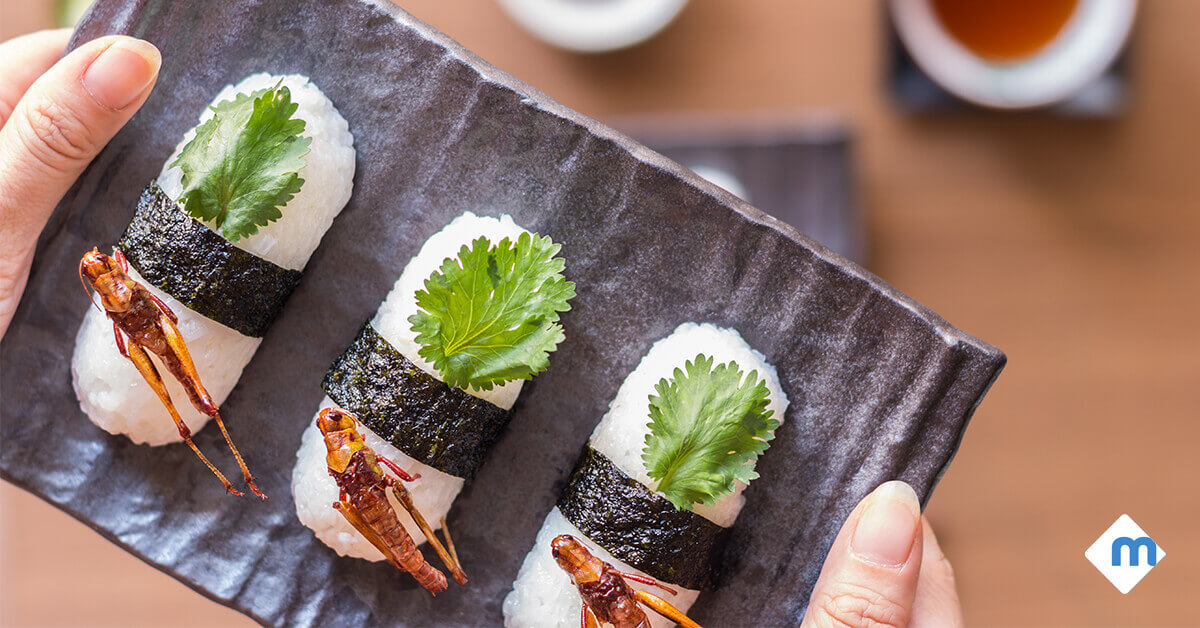5 Real Ways to Eat Bugs

Like many people, you’ve probably seen one too many episodes of Fear Factor. Watching someone uneasily crunch down on a cockroach while immersed in a tank of them is enough to put anyone off the idea of eating insects… as if you needed a reason to avoid eating them in the first place.
Despite what television would have you believe, eating bugs really doesn’t have to be a crawl-out-of-your-skin nightmare. Actually, more people eat insects than you’d think—and for good reason. They’re a cheap, environmentally sustainable source of protein and other nutrients… seriously!
If you’re considering dipping your toes into the world of entomological cuisine (or if you’re just culinarily curious), we’re outlining a few different approaches you can take to realistically cook and serve up bugs.

1. Freeze
When dealing with any kind of live bugs, freezing them first will make any process much more manageable. Depending on your planned approach, you may even want to freeze already dead bugs as a first step.
Then there’s always the option to dip your raw crickets in yogurt, freeze them, and call them popsicles! Although that’s probably not the direction we’d take. Read on for more… creative… options.

2. Pan Fry
The good thing about a good old-fashioned sauté is that you can throw anything in there you want. Have go-to stovetop recipes for vegetables or chicken? Try them with beetles or even mealworms instead.
Who knows? Maybe you’ll like the bug versions more than the originals. Now wouldn’t that be a surprise!

3. Oven Roast
You can’t go too wrong with a simple oven roasting and salting. For this method, both beetles and crickets work relatively well. If you close your eyes, how different could they really be from any other salty snack?
If you’re planning on roasting mealworms, you may want to consider using an outdoor grill. Many find the smell too unappealing indoors, and if you’re a newcomer to eating worms you’ll likely need them to be as appetizing as possible.
Purportedly, mealworms can have a somewhat nutty taste—something to think about.

4. Grind Up
Supposedly, crickets taste like a vague combination of shrimp and almonds.
If for some reason that flavor doesn’t call your name, you might consider throwing cooked crickets into a food processor to create a more nutritious alternative to its wheat-based counterpart: cricket flour.

5. Get Creative!
No matter how comfortable you are with preparing and eating insects, getting creative with them is never a bad idea.
If you’re aiming to conceal them, try adding bug bits to hamburger patties or casseroles. Conversely, you could brazenly skewer them on kabobs, candy them, or add them to a stew. If crickets and beetles seem boring to you, you could even try your hand at moths… just make sure to remove the wings first.
For more inspiration, hop on over and check out these cricket-based recipes. There are people all around the world who regularly work creepy-crawlies into their diets—so don’t let cooking insects intimidate you! When it comes to preparing bugs, you’re only limited by your imagination (and perhaps your gag reflex).
Sources: https://www.nytimes.com/2018/09/07/t-magazine/eating-bugs-food-restaurant.html https://www.huffpost.com/entry/5-ways-to-cook-a-cricket_b_914543 http://mealwormcare.org/recipes-nutrition/ https://www.smithsonianmag.com/innovation/five-ways-to-start-eating-insects-180957346/ https://news.nationalgeographic.com/news/2013/13/130514-edible-insects-entomophagy-science-food-bugs-beetles/ https://blogs.scientificamerican.com/anthropology-in-practice/whats-stopping-us-from-eating-insects/

